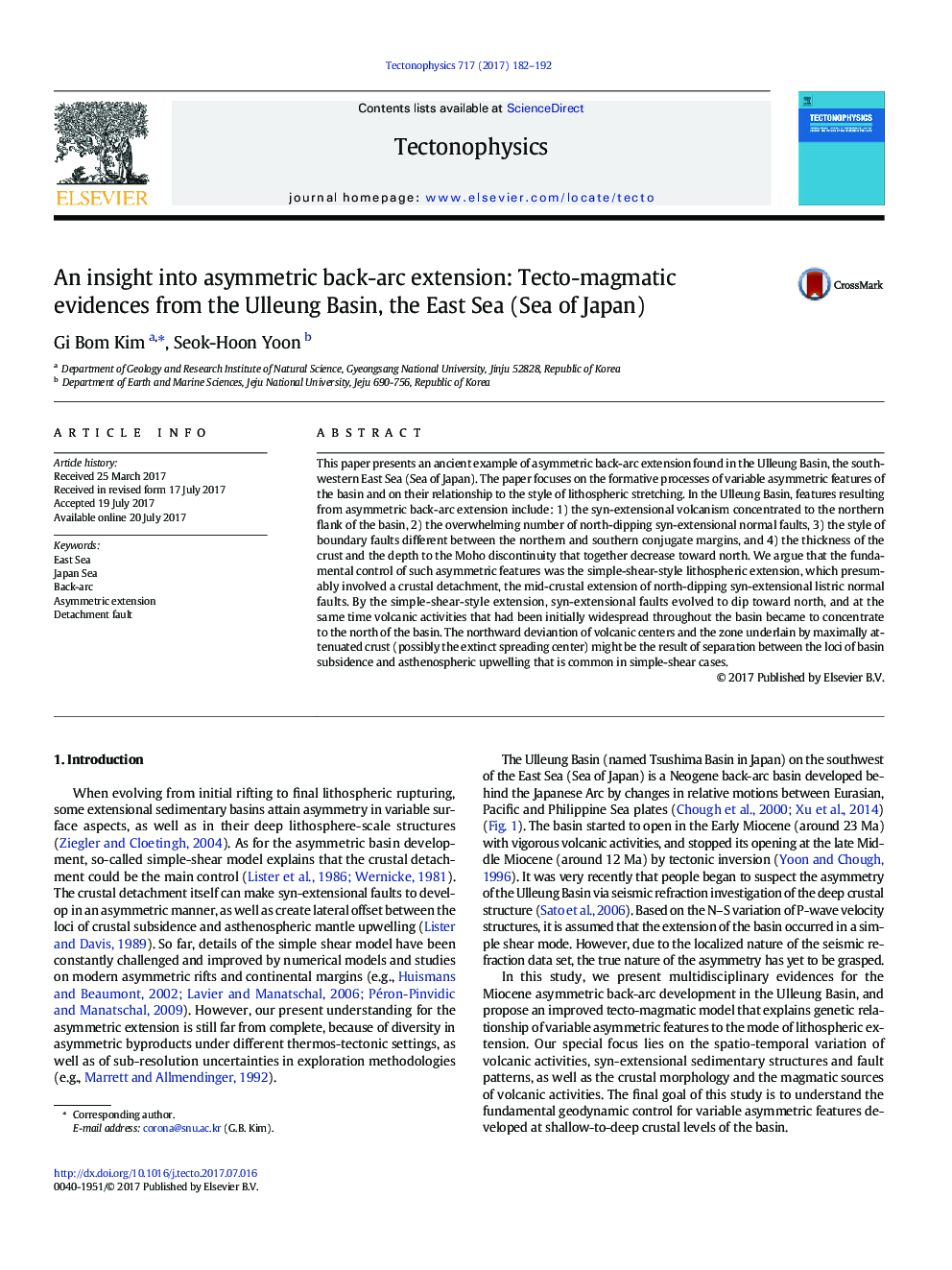| Article ID | Journal | Published Year | Pages | File Type |
|---|---|---|---|---|
| 5781467 | Tectonophysics | 2017 | 11 Pages |
â¢The Ulleung Basin experienced simple-shear style asymmetric back-arc extension.â¢The asymmetric extension of fossil back-arc basins can be studied based on stratigraphy, volcanic activity, fault pattern and deep crustal structure.â¢By the simple-shear-style crustal extension, magmatism, fault pattern and crustal structure become increasingly asymmetric.
This paper presents an ancient example of asymmetric back-arc extension found in the Ulleung Basin, the southwestern East Sea (Sea of Japan). The paper focuses on the formative processes of variable asymmetric features of the basin and on their relationship to the style of lithospheric stretching. In the Ulleung Basin, features resulting from asymmetric back-arc extension include: 1) the syn-extensional volcanism concentrated to the northern flank of the basin, 2) the overwhelming number of north-dipping syn-extensional normal faults, 3) the style of boundary faults different between the northern and southern conjugate margins, and 4) the thickness of the crust and the depth to the Moho discontinuity that together decrease toward north. We argue that the fundamental control of such asymmetric features was the simple-shear-style lithospheric extension, which presumably involved a crustal detachment, the mid-crustal extension of north-dipping syn-extensional listric normal faults. By the simple-shear-style extension, syn-extensional faults evolved to dip toward north, and at the same time volcanic activities that had been initially widespread throughout the basin became to concentrate to the north of the basin. The northward deviantion of volcanic centers and the zone underlain by maximally attenuated crust (possibly the extinct spreading center) might be the result of separation between the loci of basin subsidence and asthenospheric upwelling that is common in simple-shear cases.
